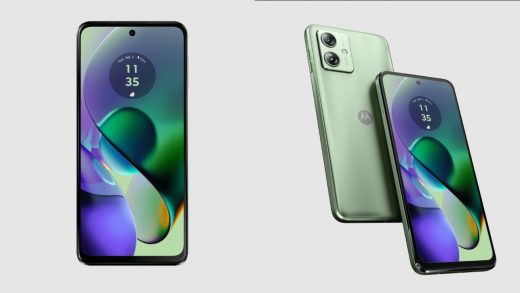
The Indian EV car market has become very competitive and fiery. You will easily find EV cars in almost every price segment. As of now, Tata Motors holds the leading position in the electric vehicle (EV) market, commanding approximately 70 to 75 percent of the EV vehicle market share. In an effort to maintain its stronghold in the EV segment, the company has unveiled its inaugural electric vehicle for the year 2024, named Tata Punch EV. Tata Passenger Electric Mobility Ltd, a subsidiary of Tata Motors, has introduced its inaugural pure electric platform called acti.ev (Advanced Connected Tech-Intelligent Electric Vehicle). The Electric Punch is set to be the maiden product built on this all-electric architecture. The company has the potential to extend the use of this platform to future electric car models, including Punch, Sierra, Harrier, and Curvv.
Ankit Sharma and Nitesh Papnoi from Gadgets 360 got a chance to sit down with Mr. Anand Kulkarni, Tata Motors’ Chief Product Officer, to gain insights into this development and company’s future plan. Some responses have been edited and condensed for clarity.
Ankit Sharma & Nitesh Papnoi: Tata Punch EV is the first electric car from the company in 2024. How many modifications and changes have been made to this new lineup (Acti.ev) compared to the ICE version?
Anand Kulkarni: Tata Punch EV has undergone significant modifications, being launched on the dedicated full electric platform named Acti.ev. Any EV will be comprised of four layers. The first layer will be the powertrain layer. Which is the motor, the gearbox, the battery, and the power electronics. The second layer will be pertains to the mechanical platform, encompassing features like suspension, floor plan, and attachments. Moreover, the third layer will be of the E&D architecture, which means electrical and electronics. Infotainment, telematics unit those kinds of things.
And the last one will be the cloud architecture, which is the one that connects everything and brings the connected car features to you. So, in these four layers, the most important layer is that of the floor plan and the way the suspensions are attached. Because that’s where the car really stands up on itself. Now, this is an area which has undergone a significant change. Because in a legacy ICE platform, it is not designed around the battery. So, there are always some compromises. Because you have to flow the batteries around the floor and you can’t protect enough spaces.
In the pure EV architecture, what we have done is designed the vehicle or the floor plan around the batteries. And as a result, there’s more than adequate space for the batteries. So, first we created space for the battery. Then we had to also see how in case of a crash impulse, the car would sustain itself. Therefore, the structure and the form, the rigidity around it had to be designed. Then we also said that this architecture will be used for multiple drive configurations.
Ankit Sharma & Nitesh Papnoi: With the launch of Tata Punch EV on the new EV platform, can customers expect a reduction in interior space within their cars?
Anand Kulkarni: Certainly not. In fact, customers can enjoy increased interior space in the Tata Punch EV. Some cars can have front wheel drive, some cars can have rear wheel drive, and some cars can have all wheel drive. Therefore, we had to provide for space on that account. Then once we had done all these things, we said how do we also provide more space? Because that is the most important thing for a customer. So, space is of two types. One is storage, meaning where we keep our luggage or other things. In addition, where we sit and where we are comfortable, which is inside the cabin. So, then we looked at how do we make that space more comfortable and give more storage spaces.
Thus, the incorporation of a frunk for front storage, uncompromised boot space, and a focus on the infotainment layer were essential considerations. Recognizing the contemporary customer’s desire for gadgets, information, and seamless integration of the outside world into the car, features such as screens, HMIs, and the arcade.ev app suite were integrated into the Tata Punch EV, bringing the entire vehicle concept together.
Ankit Sharma & Nitesh Papnoi: Is Tata Punch EV awarded a five-star safety rating? or has the decision to launch it on a full electric platform impacted its safety features?
Anand Kulkarni: Indeed, the safety aspect remains robust in the electric vehicle, as the inclusion of the battery leads to an increase in mass. So, despite the mass increase, there is no compromise on the safety. We haven’t yet submitted the cars for a GNCAP or a Bharat NCAP. That’s why we can’t say that it’s a five-star. But it is on the way, we are going to submit the cars. The design itself has been made according to being able to meet those requirements. But until the certificate comes, we can’t say anything. Tata is known for its strong vehicles and we have designed Tata Punch EV also on this strategy.
Ankit Sharma & Nitesh Papnoi: Tata Motors, being a leader in electric car sales in the country, offers both short-range and long-range electric cars. Which range is more preferred by buyers, the short range or the long range?
Anand Kulkarni: Long-range options are gaining popularity among Indian customers. For Example In Tiago, we are offering a 19 kWh battery which gives about 170 km. And then we offer a 24 kWh battery which gives 210-220 km. Everybody is choosing to buy a 24 kWh battery. Similarly, Tata Nexon has also been introduced in 30 kWh and 40 kWh battery packs. And 80% people choose the 40 kWh battery.
Ankit Sharma & Nitesh Papnoi: What is the primary focus of the company? Is it geared towards expanding the range of EV cars, or is the emphasis on advancing fast charging technology?
Anand Kulkarni: As a company, we are committed to keeping our technology ready for both fast charging and extended ranges. Developing an extended range is relatively straightforward, as infrastructure requires collaboration and co-development with various stakeholders. We have already taken the initial steps, having initiated infrastructure development three years ago in collaboration with Tata Power. Currently, there are approximately 4500 fast charging points on the roads, which are actively used. However, recognizing that this may not be sufficient, we have recently established a collaborative network of charge point operators. We invited these operators to collaborate and share data, utilizing our comprehensive information on the operational patterns of vehicles, their locations, and the optimal charging requirements. By providing this data, we aim to support and facilitate the setup of additional charging infrastructure. This initiative reflects our ongoing commitment to advancing the charging infrastructure.
Ankit Sharma & Nitesh Papnoi: The most significant expense in an electric car remains the batteries. What reassurances is Tata Motors providing to people regarding car batteries?
Anand Kulkarni: Yes, you are right. However, we are certifying or warranting our car batteries. Warranty is important. The battery pack is warranted for 8 years or 1,60,000 kilometers. The rationale behind this duration is that the average daily driving for an Indian customer is about 50 to 60 kilometers, totaling around 20,000 kilometers a year. Considering the cycle life of 2000 cycles for the LFP chemistry batteries and a real-life range of 300 kilometers per cycle, the battery’s lifespan is approximately 6 lakhs. Even in the case of second ownership, the battery warranty is transferable when the car is sold. And in case of any contingency the cost of the battery is covered under insurance.


